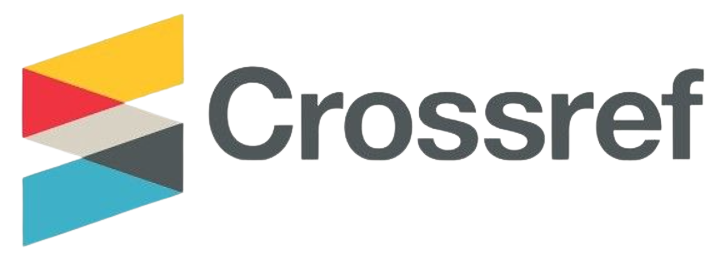Pemodelan Classification and Regression Tree (CART) Pada Klasifikasi Gaya Hidup Sehat Menggunakan Pendekatan User-Based Classification
DOI:
https://doi.org/10.53513/jursi.v4i4.11677Keywords:
Classification, Healthy Lifesty, Regression, CART, User-Based ClassificationAbstract
Determining a healthy lifestyle is an important issue in public health, especially in efforts to prevent chronic diseases. The classification process is carried out by constructing a decision tree that divides data into lifestyle classes (healthy/unhealthy) recursively, based on the features that provide the best separation. The results show that the CART model is able to identify significant lifestyle patterns with fairly high classification accuracy, as well as provide a clear understanding of user factors that contribute to healthy lifestyle status. This approach supports decision making in data-based health promotion programs. From a total of 70 data, the average target value is 0.146. The tree will divide the data based on whether the Feature value is ≤ 3.25. If true to the left, if false to the right. This node shows 49 samples from the root following the condition Feature <= 3.25 and is now divided again based on Feature <= 2.538. This process continues recursively until it reaches the leaf node. There is only 1 sample, with target value = 0.3, so there is no variance (squared_error = 0). If new data enters this branch, the model will predict 0.3 as the regression value.
References
M. I. Syafir and M. S. Saleh, “Metode partisipatif dalam meningkatkan taraf kesehatan masyarakat,” vol. 02, no. 01, pp. 8–14, 2025.
R. N. Ramadhon, A. Ogi, A. P. Agung, R. Putra, S. S. Febrihartina, and U. Firdaus, “Implementasi Algoritma Decision Tree untuk Klasifikasi Pelanggan Aktif atau Tidak Aktif pada Data Bank,” Karimah Tauhid, vol. 3, no. 2, pp. 1860–1874, 2024, doi: 10.30997/karimahtauhid.v3i2.11952.
S. Aldana and J. S. Wibowo, “Penerapan Data Mining Terhadap Klasifikasi Pasien Penderita Penyakit Liver Menggunakan Metode K-Nearest Neighbor,” Progresif J. Ilm. Komput., vol. 20, no. 1, p. 124, 2024, doi: 10.35889/progresif.v20i1.1376.
B. L. Fauzan, T. Agustin, and A. M. H. Mahmudah, “Prediksi Klasifikasi Kecelakaan Lalu Lintas di Kota Surakarta dengan Menggunakan Metode Regresi Logistik Multinomial,” Sustain. Civ. Build. Manag. Eng., vol. 1, no. 4, p. 9, 2024, doi: 10.47134/scbmej.v1i4.3159.
P. Kinerja, M. Klasifikasi, and C. Saliva, “Perbandingan kinerja metode klasifikasi citra saliva ferning untuk deteksi masa subur berbasis machine learning,” vol. 6, no. 2, pp. 1–8, 2023.
A. Alcacer, I. Epifanio, J. Valero, and A. Ballester, “Combining classification and user-based collaborative filtering for matching footwear size,” Mathematics, vol. 9, no. 7, pp. 1–15, 2021, doi: 10.3390/math9070771.
E. Pranadjaya, E. S. Pangestu, C. O. Sereati, S. Octaviani, and M. Darmawan, “Perbandingan Algoritma Machine Learning menggunakan Orange Data Mining untuk Klasifikasi Jenis Kendaraan pada Sistem Tilang Digital,” J. Elektro, vol. 17, no. 1, pp. 41–47, 2024, doi: 10.25170/jurnalelektro.v17i1.5429.
N. Aini, M. Arif, I. T. Agustin, and Z. B. Toyibah, “Implementasi Algoritma Random Forest untuk Klasifikasi Bidang MSIB di Prodi Pendidikan Informatika,” J. Inform., vol. 11, no. 1, pp. 11–16, 2024, doi: 10.31294/inf.v11i1.20637.
R. D. Adiningtiyas, A. Salma, and F. Fitri, “Implementation of CART Method with SMOTE for Household Poverty Classification in Mentawai Islands 2023,” vol. 2, no. 2010, pp. 422–429, 2024.
N. U. Khan, W. Wan, R. Riaz, S. Jiang, and X. Wang, “Prediction and Classification of User Activities Using Machine Learning Models from Location-Based Social Network Data,” Appl. Sci., vol. 13, no. 6, 2023, doi: 10.3390/app13063517.
N. Ayuningtyas and W. Yustanti, “Semi-Supervised Learning pada Pelabelan dalam Klasifikasi Multi-Label Data Teks,” J. Informatics Comput. Sci., vol. 06, no. 1, pp. 240–248, 2024.
A. Suryana, A. Irma Purnamasari, and I. Ali, “Mengoptimalkan Kepuasan Pengguna: Analisis Sentimen Review Aplikasi Grab Di Indonesia,” JATI (Jurnal Mhs. Tek. Inform., vol. 8, no. 3, pp. 3396–3404, 2024, doi: 10.36040/jati.v8i3.9688.
N. Pratiwi and Y. Setyawan, “Analisis Akurasi Dari Perbedaan Fungsi Kernel Dan Cost Pada Support Vector Machine Studi Kasus Klasifikasi Curah Hujan Di Jakarta,” J. Fundam. Math. Appl., vol. 4, no. 2, pp. 203–212, 2021, doi: 10.14710/jfma.v4i2.11691.
I. Nabila, I. M. Sumertajaya, and M. Raharjo, “Penerapan Metode CART pada Pengklasifikasian Bekerja dan Pengangguran di Kabupaten Subang,” Xplore J. Stat., vol. 11, no. 2, pp. 120–129, 2022, doi: 10.29244/xplore.v11i2.890.
M. I. Siahaan and E. Rosmaini, “Use of Classification and Regression Tree (CART) Method for Classification of Labor Force Participation Levels in Medan City in 2019,” FARABI J. Mat. dan Pendidik. Mat., vol. 5, no. 2, pp. 95–103, 2022, doi: 10.47662/farabi.v5i2.386.
I. Nawawi and Z. Fatah, “Penerapan Decision Trees dalam Mendeteksi Pola Tidur Sehat Berdasarkan Kebiasaan Gaya Hidup,” vol. 2, no. 4, pp. 34–41, 2024.
W. S. MA, S. Dur, and R. Aprilia, “Analisis Waktu Kelulusan Mahasiswa Menggunakan Bagging Cart pada Fakultas Sains dan Teknologi UIN Sumatera Utara,” FARABI J. Mat. dan Pendidik. Mat., vol. 6, no. 2, pp. 172–179, 2023, doi: 10.47662/farabi.v6i2.628.
E. Setiawaty, F. M. Afendi, and C. Suhaeni, “Metode Cart Untuk Mengidentifikasi Faktor-Faktor Yang Memengaruhi Waktu Pembelian Kendaraan Kedua,” Xplore J. Stat., vol. 10, no. 2, pp. 140–151, 2021, doi: 10.29244/xplore.v10i2.237.
Downloads
Published
Issue
Section
License
Copyright (c) 2025 Jurnal Sistem Informasi Triguna Dharma (JURSI TGD)

This work is licensed under a Creative Commons Attribution 4.0 International License.




















